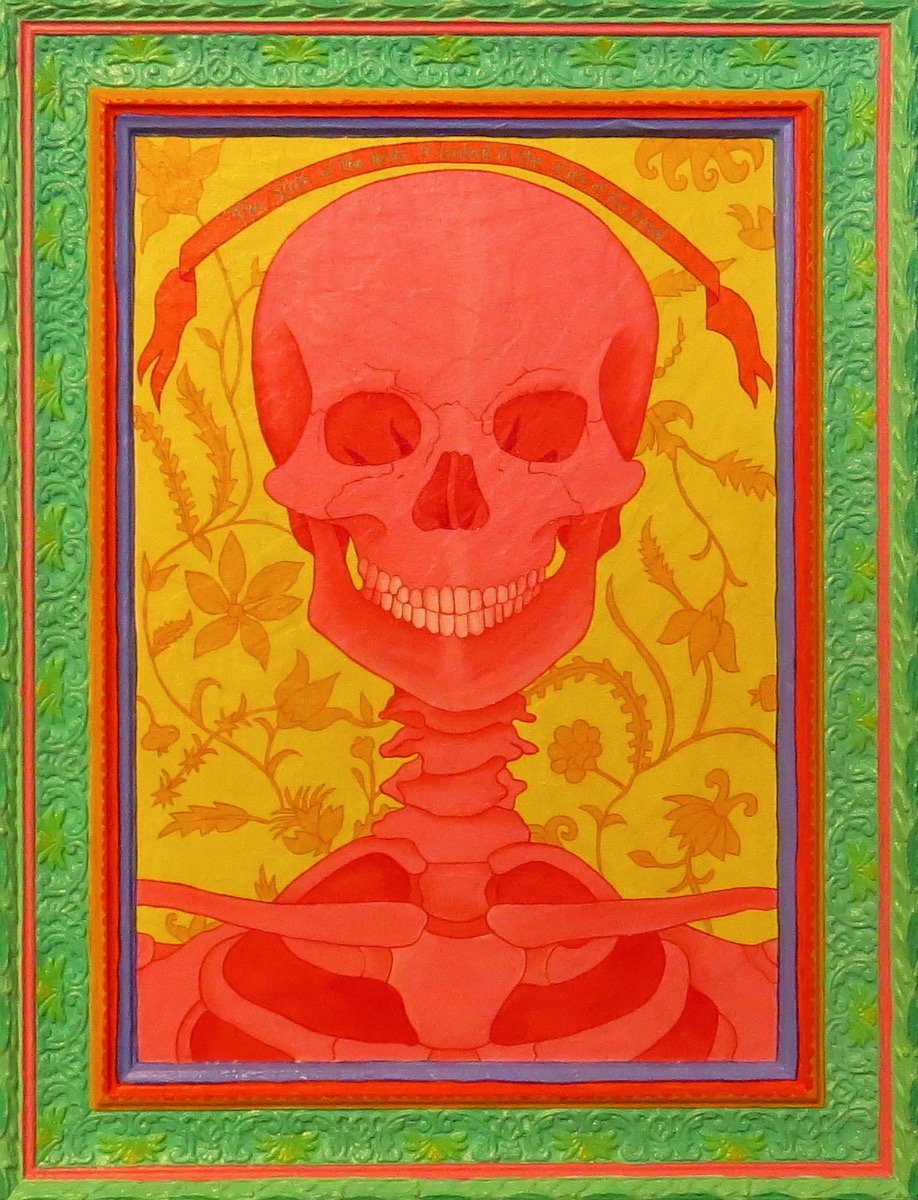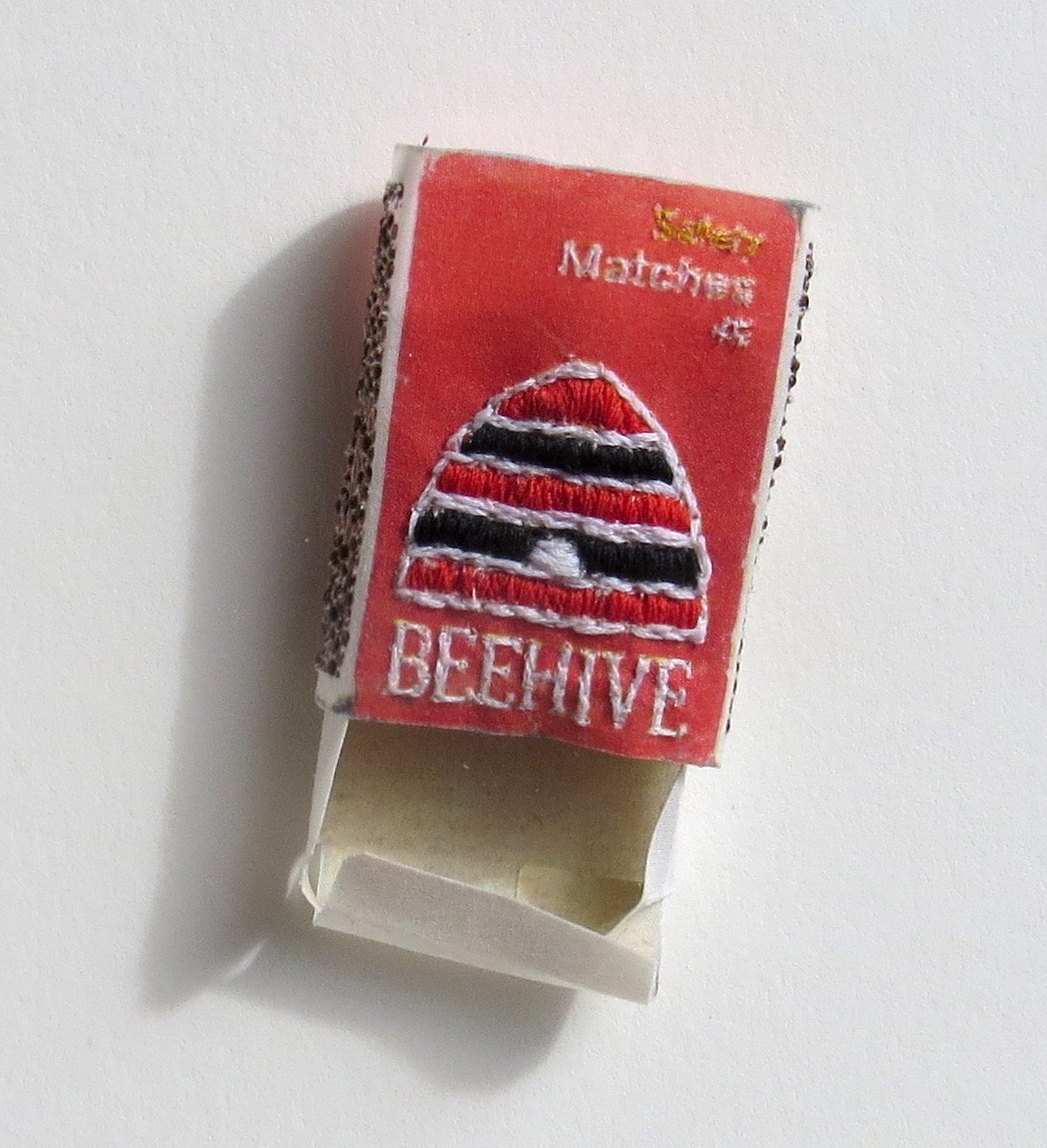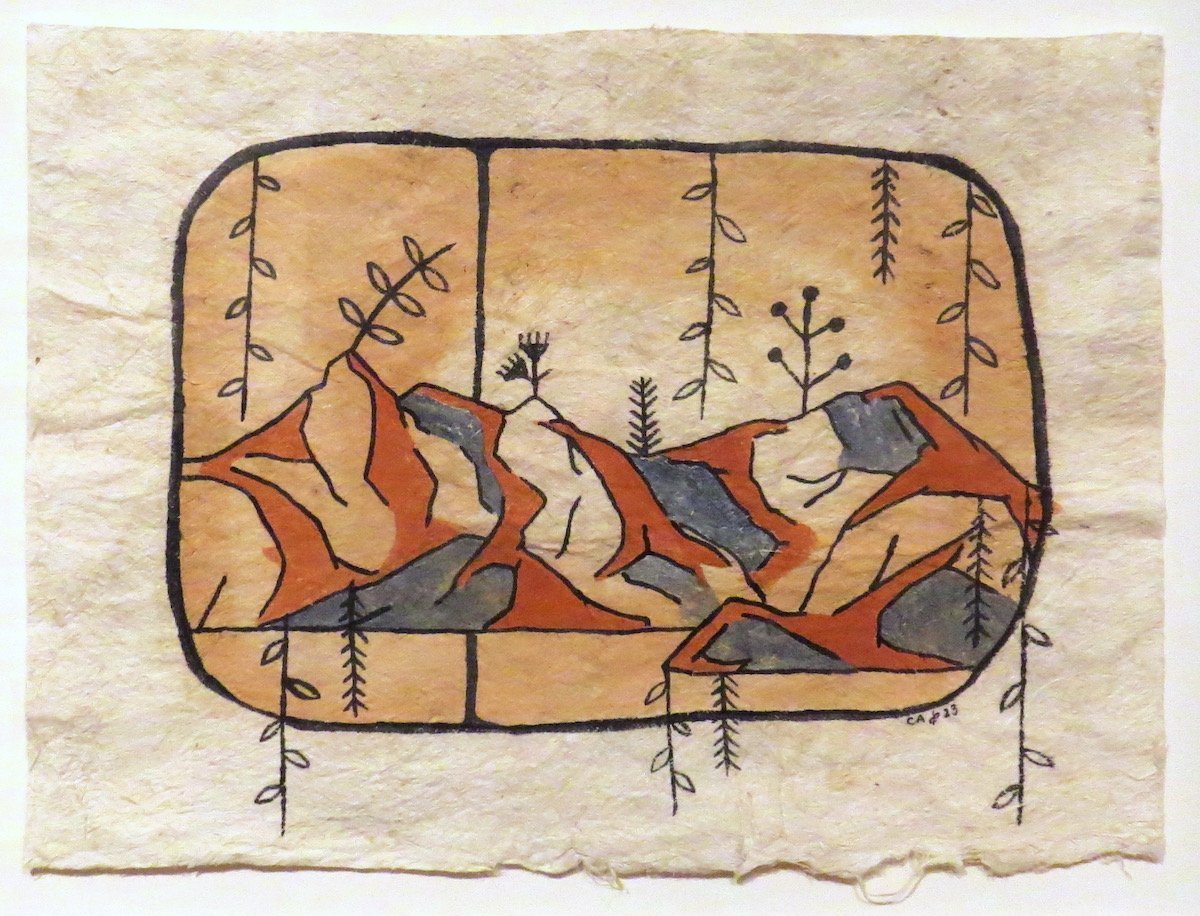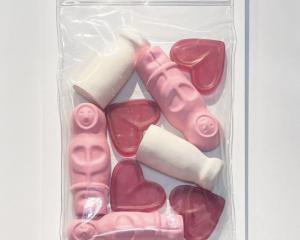
(Brett McDowell Gallery)
A solo exhibition by Nicola Jackson is a rarity, but that rarity has been ameliorated by an overflowing wealth of works at Brett McDowell Gallery.
Over 60 pieces, created over the course of the last 20 years, are presented in a salon-style hang, for which part of the gallery has been transformed into an Edwardian parlour painted in a soft Wedgwood blue.
Against this calm backdrop, the vibrant colours of Jackson's art stand out brilliantly as they sit cheek by jowl on the walls. The parlour-like setting is enhanced by the presence of Jackson-painted furniture and a series of brightly decorated busts, their forms deliberately suggesting vintage phrenology heads.
Jackson's work is attractive yet visceral, while retaining a dark humour. Anatomical studies remain a touchstone, as does the influence of artists such as Frida Kahlo, and the presentation of the display in its parlour setting is reminiscent of the unnerving cartoons of illustrator Edward Gorey, with their haunted manor house settings. Jackson's art, though in palette stridently different from its surroundings, perfectly suits this ghostly mood (and the exhibition is excellently timed for Hallowe'en).
The mixed-media paintings themselves, including many small cameos, overwhelm with their complex narratives, and are paradoxically joyful despite their often dark subject matter.

(Olga)
Olga Gallery is presenting a double exhibition by Jay Hutchinson and Justin Spiers.
Hutchinson's display is primarily a launch for a limited-edition book, Landfill. The artist continues his practice of creating delicate and detailed embroidered copies of found trash. A specific site is often chosen by the artist, who then gathers up discarded wrappers and other detritus, using them as the basis for art by the addition of fabric and embroidery silks. In the current display, nine sealed copies of the book are coupled with nine framed works, each based on an individual found wrapper or container.
Next to these works sits a series of strong photographic studies of the top of Lawyer's Head. The local landmark is depicted as a gloomy and neglected spot, a reflection which ties in with the promontory's notoriety as a suicide spot. By focusing on the non-scenic side of the headland, Speirs challenges us to look at the location with the bleak eye of someone who is at the end of their tether, and to consider how we view a place depending on our emotions and mindset.
Both displays reflect well on what is beautiful and what is dreary about our landscape, and how our internal views often determine which of these any particular scene might be.

(Dunedin Public Art Gallery)
Cora-Allan's exhibition at Dunedin Public Art Gallery is a major display chronicling a deeply personal journey around the country's coast, reflecting on both European and Polynesian discovery of these islands.
Using the journey of the Endeavour as a starting point, and particularly noting the role of Tahitian navigator Tupaia as part of that voyage, the artist has herself travelled the length of the country in order to discover the continuum that is the whenua's connection between individual places around the country. Sketching as she travelled, Cora-Allan gained the raw materials, both in pictorial form and from natural earths taken as pigments, to create a series of artworks which reveal a new perspective on the land. The artist's heritage, containing as it does European, Māori (Ngāpuhi and Ngātitumutumu) and Pacific island (Niuean) lineage, allowed her to understand the process of discovery from both European and Pacific points of view.
The works, in earth pigment on Niuean bark cloth, present the land both as free floating panels and in formal academic framing, reflecting the two separate strands of art and discovery. Alongside these are detailed displays of the materials used and sketches taken, and also a pair of videos documenting the artist's travels and artistic process.
By James Dignan








![Untitled (c. mid 1990s, [pink 3]), by Martin Thompson, 415mm×590mm. Photo: courtesy of Brett...](https://www.odt.co.nz/sites/default/files/styles/odt_landscape_small_related_stories/public/story/2024/02/untitled_pink_3.jpg?itok=Q0aQrc9o)



